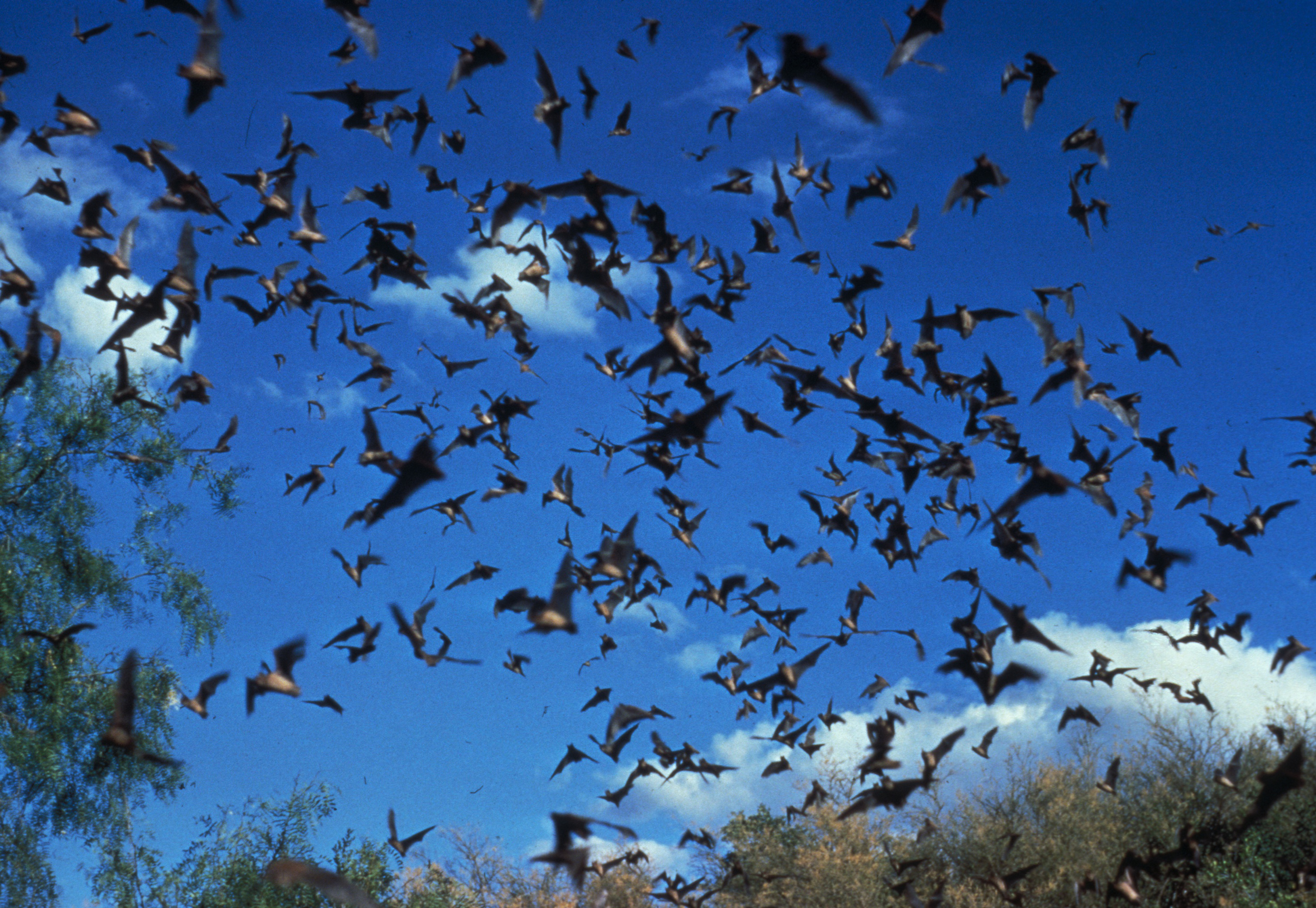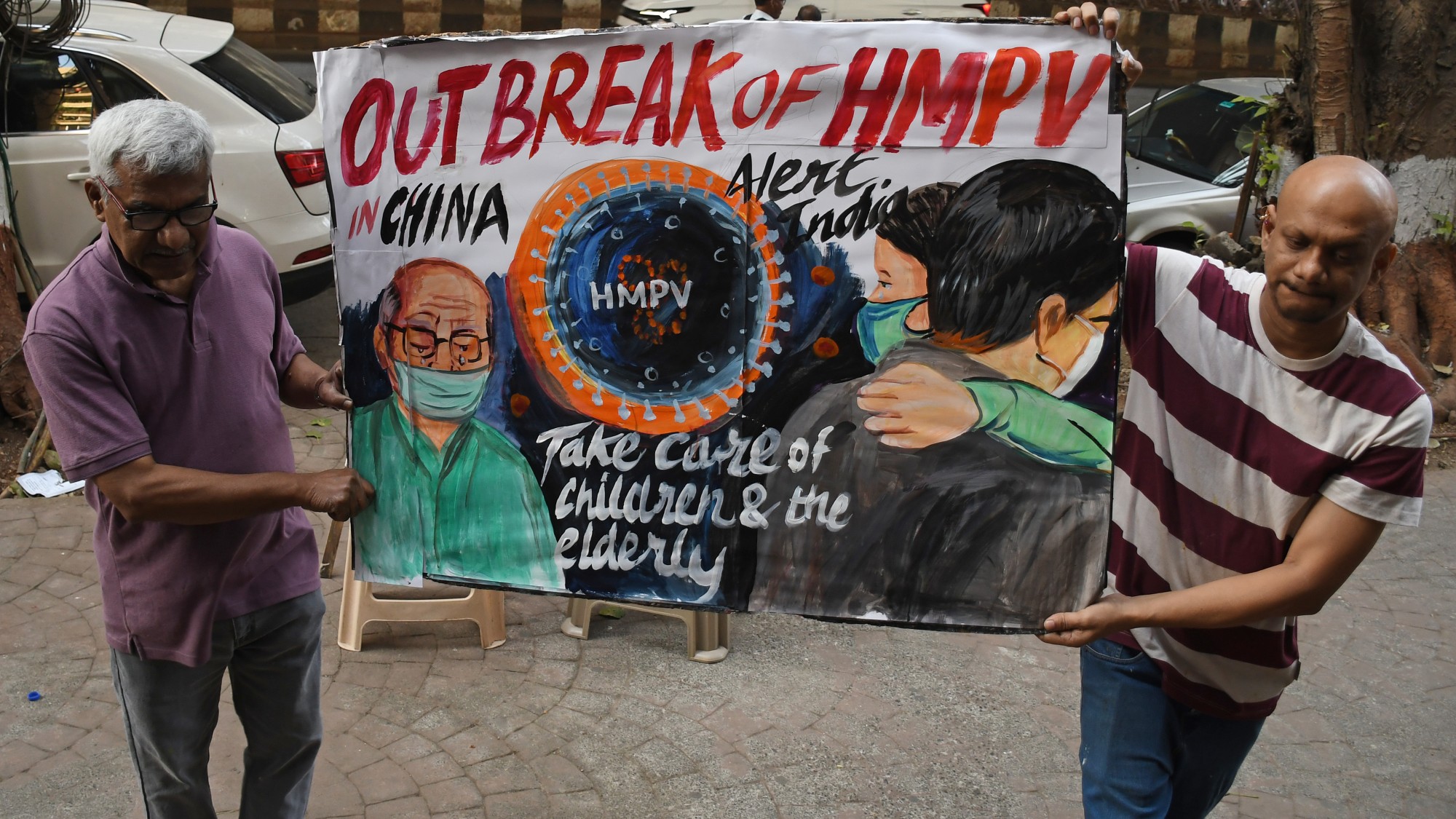Welcome to the 'Pandemicene'
As humans encroach on the natural world, more deadly pandemics are likely to follow COVID. Why?

As humans encroach on the natural world, more deadly pandemics are likely to follow COVID. Why? Here's everything you need to know:
What causes pandemics?
Nearly all of them start with animal-to-human transmission of a virus or bacteria to which people have no immunity. Animal pathogens are the source of about 60 percent of known infectious diseases and 75 percent of those that appear for the first time in humans. About 250 known diseases have made the leap from animals to humans, but a 2020 United Nations report estimates that as many as 850,000 viruses lurk within the bodies of mammals and birds. Zoonotic diseases have wreaked havoc throughout human history. The bubonic plague, which wiped out up to 60 percent of the population of Europe, Asia, the Middle East, and North Africa in the 14th century, was caused by the Y. pestis bacteria transmitted from rodents via fleas. The 1918 flu pandemic, which killed an estimated 50 million people, is believed to have originated in poultry and wild birds. "Spillover" events appear to be getting more common. HIV and Ebola can be traced back to primates in Africa; the original SARS virus is believed to have jumped from bats to humans by way of a mammal called a civet. COVID is caused by a bat virus, SARS-CoV-2, that recent research has found most likely spilled over from animals sold at a wet market in Wuhan, China, in 2019, although some believe Chinese scientists modified the virus and accidentally let it escape.
Why are animal viruses so dangerous?
Most viruses that infect animals can't harm us because they lack the ability to bind to human cells. Occasionally, though, one manages to attach and penetrate human cells, replicate, and evolve. This occurs before the immune system recognizes the invader as a threat and makes antibodies and T and B cells to ward off the virus. For animal pathogens to infect humans, direct contact is not necessary: They can also travel through contaminated food, water, surfaces, or via a parasitic vector such as a flea or mosquito. Some animals are more prolific vessels and spreaders of disease. Over 10 percent of rodent species host pathogens that can possibly infect people. Apes, monkeys, and other primates — our closest relatives in the wild — carry 77 known zoonotic viruses. And bats, which make up more than a fifth of the 6,400 known species of mammal, are uniquely well-equipped to spread disease, with the ability to fly long distances and a unique immune system that allows them to carry a high viral load without dying or becoming ill.
The Week
Escape your echo chamber. Get the facts behind the news, plus analysis from multiple perspectives.

Sign up for The Week's Free Newsletters
From our morning news briefing to a weekly Good News Newsletter, get the best of The Week delivered directly to your inbox.
From our morning news briefing to a weekly Good News Newsletter, get the best of The Week delivered directly to your inbox.
Why is this threat growing?
Humans are pushing further into previously uninhabited areas, triggering a cascade of changes in the natural world. Rapid deforestation in Africa and South America pushes wildlife toward areas where people live and work, increasing the risk of interaction and disease transmission. People in many countries consume the meat and fur of wild animals — the cause of several spillover virus outbreaks, including SARS, monkeypox, and two strains of Ebola. In a recent journal study, researchers at London's Royal Veterinary College hypothesized that rodents in West African cities have enabled the rapid, transcontinental spread of monkeypox, which now infects more than 2,100 people in 42 countries, including more than 100 in the U.S. In the jet age, people infected with a novel virus in one country can spread it to the other side of the globe in a matter of hours. And climate change is poised to make the problem exponentially worse over the next 50 years.
How does climate change factor in?
Scientists warn that we have entered a new epoch: the "Pandemicene." By 2070, there will be an estimated 300,000 "first encounters" among species that don't normally interact, according to computer models run by Georgetown University researchers. Those encounters will cause about 15,000 spillovers of viruses into hosts with naïve immune systems. Some changes are already happening. Mild winters and increased rainfall are a boon for breeding mosquitos, ticks, and other disease-carrying parasites. Over the past decade, the rate of Lyme disease incidence has doubled, and two new additional tick-borne diseases have been identified. The World Health Organization reports that dengue fever, which causes up to 390 million yearly infections worldwide, has increased 30-fold over the past 50 years.
What can be done?
Using fieldwork and computer modeling, scientists attempt to spot viral outbreaks among susceptible animals — but it would be nearly impossible to monitor all species all the time. Some countries are also cracking down on the bushmeat trade, but farmed meat also contributes to the spread of disease: The majority of the world's farmland helps feed and house livestock, and creating more farms often requires cutting deeper into forests and jungles. Rather than respond to new pandemics with quarantines and frantic vaccination efforts, it would be far more efficient for humanity to take global preventative measures, such as halting deforestation and new animal farms. But it may be too late to reverse the growing likelihood of viruses jumping from animals to humans. "The moment to stop climate change from increasing viral transmission was 15 years ago," said Colin Carlson, the lead author of the Georgetown study. "We have to prepare for more pandemics."
COVID's four-legged helpers
Some zoonotic viruses that afflict humans can also infect "reservoir" species like deer and pets, where they keep circulating and bouncing back to humans. Scientists have detected SARS-CoV-2 in at least 29 other animal species, including wildlife, zoo inhabitants, and pets. The early-2022 outbreak in Hong Kong, which long had a "zero COVID" policy, was traced to 11 imported pet hamsters, which could have caused a "spillback" to their human handlers. In North America, officials are more worried about deer. Last August, the Department of Agriculture detected COVID antibodies in at least one-third of white-tailed deer in Illinois, Michigan, New York, and Pennsylvania. A researcher for the USDA's Canadian counterpart found 76 mutations in the COVID strains found in deer carcasses. Some scientists even suspect that a reservoir animal was the incubator of the highly mutated Omicron variant. "I don't think we should dismiss that possibility," said Scripps Research Institute immunologist Kristian Andersen. "It's definitely on the table."
A free daily email with the biggest news stories of the day – and the best features from TheWeek.com
This article was first published in the latest issue of The Week magazine. If you want to read more like it, you can try six risk-free issues of the magazine here.
-
 Biggest political break-ups and make-ups of 2025
Biggest political break-ups and make-ups of 2025The Explainer From Trump and Musk to the UK and the EU, Christmas wouldn’t be Christmas without a round-up of the year’s relationship drama
-
 Why 2025 was a pivotal year for AI
Why 2025 was a pivotal year for AITalking Point The ‘hype’ and ‘hopes’ around artificial intelligence are ‘like nothing the world has seen before’
-
 The best drama TV series of 2025
The best drama TV series of 2025the week recommends From the horrors of death to the hive-mind apocalypse, TV is far from out of great ideas
-
 Covid-19 mRNA vaccines could help fight cancer
Covid-19 mRNA vaccines could help fight cancerUnder the radar They boost the immune system
-
 The new Stratus Covid strain – and why it’s on the rise
The new Stratus Covid strain – and why it’s on the riseThe Explainer ‘No evidence’ new variant is more dangerous or that vaccines won’t work against it, say UK health experts
-
 RFK Jr. vaccine panel advises restricting MMRV shot
RFK Jr. vaccine panel advises restricting MMRV shotSpeed Read The committee voted to restrict access to a childhood vaccine against chickenpox
-
 RFK Jr. scraps Covid shots for pregnant women, kids
RFK Jr. scraps Covid shots for pregnant women, kidsSpeed Read The Health Secretary announced a policy change without informing CDC officials
-
 New FDA chiefs limit Covid-19 shots to elderly, sick
New FDA chiefs limit Covid-19 shots to elderly, sickspeed read The FDA set stricter approval standards for booster shots
-
 RFK Jr.: A new plan for sabotaging vaccines
RFK Jr.: A new plan for sabotaging vaccinesFeature The Health Secretary announced changes to vaccine testing and asks Americans to 'do your own research'
-
 Five years on: How Covid changed everything
Five years on: How Covid changed everythingFeature We seem to have collectively forgotten Covid’s horrors, but they have completely reshaped politics
-
 HMPV is spreading in China but there's no need to worry
HMPV is spreading in China but there's no need to worryThe Explainer Respiratory illness is common in winter